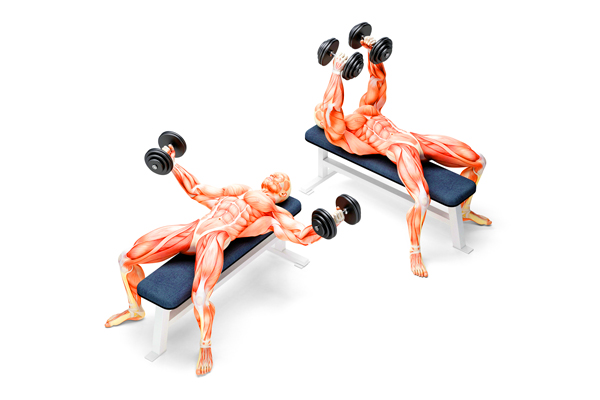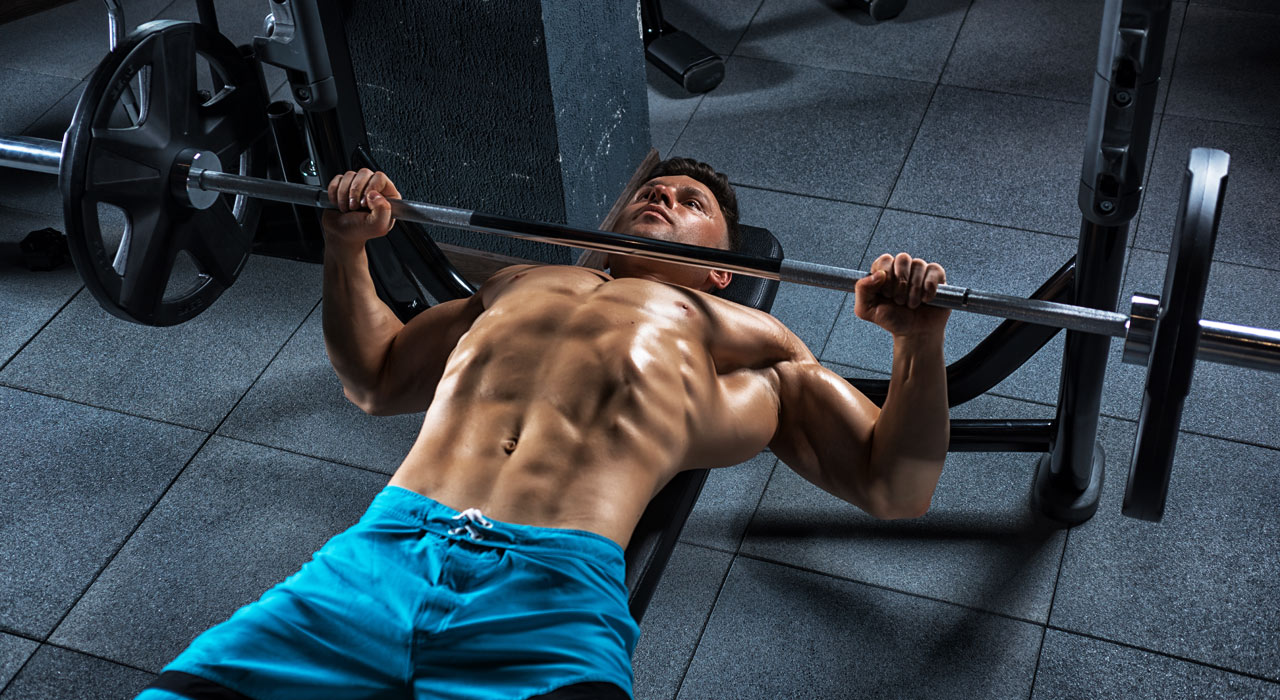A hulking chest is hot on every guy’s wish list but it’s a pursuit fraught with bro-science so we trawled the science to give you every piece of information you need for doing chest exercises differently to build more front than Walmart.
Few exercises are more synonymous with developing manly frontage than the bench press. Before you hoist the bar off the uprights you should know that your pecs are made up of two muscles: the pectoralis major (the biggest of the two) and the pectoralis minor, which sits under the former and is used mainly to pull up your ribs when you breathe, so it’s a tad useful.
To make sure each of these gets equal attention, don’t imagine that the bench press is the sole exercise responsible for creating a noteworthy chest. Yes, it’s a great exercise for strength, but there’s a huge catalogue of additional moves, outlined in the following pages, that are every bit the bench press’s equal at developing concrete slabs of muscle.
Use the following pages to refine not only your technique and exercise selection but also your mental game so you’re forever equipped with the weighty knowledge needed to forge that barrel chest.
Doing the same chest exercises differently
Elbows flared (90º) vs. elbows tucked (70º)
Shoulder blades pulled back vs. neutral
Lower arched vs. neutral vs. flat back
These techniques all offer all the same activation in your chest muscles when bench pressing but the elbows tucked, shoulder blades retracted with a slight lower back arch, protects your shoulders from injury.
Source: University of Trinidad and Tobago
9%
The amount of extra weight you’ll need to use to get maximum power output from your muscles on a machine bench press compared to one where you lower the bar to your chest.
Source: The Journal of Strength and Conditioning Research
Free-weight bench press
=
Smith machine bench press
=
Dumbbell bench press
For the amount of muscle activity they create in your pecs
Source:Journal of Sports Science
Arm recruitment during pressing
Decreased triceps activity for dumbbell bench press compared to barbell bench press
Increased biceps activity for dumbbell bench press compared to barbell bench press
Source: Journal of Sports Science
All the right angles
Your bench-pressing sweet spots for growth and power
0º = max muscle fibers in your entire chest.
Source: Strength and Conditioning Journal
30-56º = best incline angle for max muscle fibers in your upper pectorals
Source: The Journal of Strength and Conditioning Research
Source: European Journal of Sports Science
-15º = decline angle that’ll help you press up to 14.5% more weight than other setting.
Source: >The Journal of Strength and Conditioning Research<
Grip space for best chest growth
How much wider than your shoulder-width should you grasp the bar?
100%
130%
165%
190%
= The same muscle activity in your largest chest muscles, pec major.
Source: The Journal of Strength and Conditioning Research
Chest growth on a stable surface
Bench-pressing on a stable bench uses
19% more chest muscle activation than a Swiss Ball
11% more than a balance cushion
Source: The Journal of Strength and Conditioning Research

Chest exercises compared
Barbell bench press
=
Dumbbell fly
=
Pec deck
For muscle activity of the pectoralis major, although the barbell bench press had more activity compared to the inclined dumbbell fly.
Source: University of Wisconsin–La Crosse
Bodyweight pec exercises
Barbell bench press = band push-up
For strength gains when lifters used a 6 repetition maximum load for each exercise.
Source: The Journal of Strength and Conditioning Research
Muscle recruitment during chest exercises
More front and middle shoulder is used during free-weight bench press compared to Smith machine bench press.
Source: Journal of Strength and Conditioning Research
Decline – the bench press setting that uses the most of your lattimus dorsi muscles.
Source: The Journal of Strength and Conditioning Research
Benching with chains
Chain-loaded bench press = bigger 1-rep max compared to barbell bench press
Source: The Journal of Strength and Conditioning Research
How much should you be benching? Formula
1-RM = 100 x load / [102.78 – 2.78 x repetitions performed])
Your formula for using any weight to calculate the most weight you can press once (1RM)
Mind-muscle connection for power
12% more power
From psyched up lifters compared to distracted lifters.
Strength equation
Clap push-up + clap push-up + 30-second rest + bench press = increased maximum strength
Source: International Journal of Sports Physiology and Performance
Hitting up these chest exercises differently as outlined should spark the growth of your pecs into overdrive.







